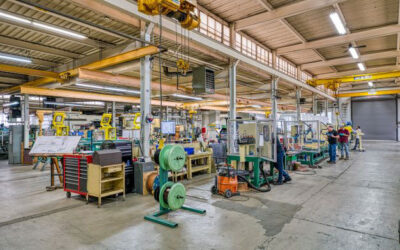The Skilled Workforce Shortage in the Motor Repair Industry: How to Address the Issue

The Challenge of Finding Skilled Employees for the Motor Repair Industry in Today’s Changing Workforce
Finding skilled people is the biggest challenge for most businesses today. Skilled people are the core of any business that’s making money. But in the motor repair industry, the heart of the ability to serve clients is to have skilled people who know the art of motor winding. As much as it looks like science, it truly involves years of experience to get the best result in the most efficient time. Unfortunately, there are fewer and fewer people coming into the skilled trades due to many factors such as demographic changes, cultural emphasis, lack of interest in the trades, and younger people choosing other career paths. This is a trend that happened long before the pandemic started and will continue into the future.
Addressing Friction Points in Business Operations: Improving Communication and Concentrating On Skilled Knowledge
So, what can be done? Many companies try to hire apprentices, recruit from other places, repurpose people from other professions, and even hire people who may not be exactly suited for the work. But all these choices are expensive and cost time and money. The answer lies within our own teams. All businesses have some degree of friction, some degree of inefficiency, and this can be improved.
One friction point that companies can address is communication between departments. Imagine if the shipping department knew a week ahead of time that a machine was going to be finished and they already had a truck scheduled. Poor communication across boundaries involves either having more managers to communicate with or a little hustling with heroic effort to make up for this. One easy way to get rid of friction is to invest in some sort of communication system or network. It doesn’t have to be an overly elaborate ERP system that records everything, but at the right size company, it can be useful.
Another friction point might be skilled knowledge. Experienced people know things from doing it. What they do is frequently craft work. There’s some art to it. Winding a motor is not something that can be taught to just anyone. How do companies concentrate their best people on those skilled things and get rid of other tedious tasks they might be doing? For example, maybe during assembly, there’s a certain feel to tightening bolts. The experienced person knows what a good outcome is in testing. But suppose you just had a torque wrench and said, all bolts must be to 15-foot pounds. You could take somebody with less experience, point it at them and say, here, tighten all those bolts until this needle shows 15. Meanwhile, if the experienced person is onto doing something else, it frees them up to work on skilled tasks.
The Role of Technology and Training in the Motor Repair Industry
Investing in technology and training is also key. A simple investment in training and certification programs for workers is essential. It helps them learn new skills, advance in their careers, and ultimately become more valuable employees. Companies can also invest in technology that automates tedious tasks or increases efficiency. This can free up time for skilled workers to focus on more important tasks that require their unique skills.
The skilled workforce shortage in the motor repair industry is a long-term issue that will continue to be a challenge. Companies need to look at ways to address the issue internally, such as improving communication between departments and investing in technology and training for their workers. By doing so, they can improve efficiency and ultimately become more successful in serving their clients.



